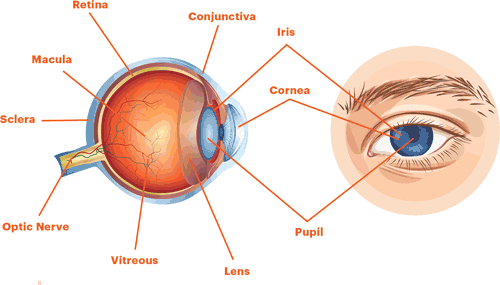“People with diabetic eye disease do not realize that their eyesight is slowly deteriorating.”
The only way to diagnose diabetic eye disease in its early stages is with a dilated eye exam. Using eye drops to enlarge the patient’s pupils, a dilated eye exam allows the eye care professional to see more of the inside of the eye to check for signs of the disease. In about 90 percent of those who would otherwise become blind, the early detection of diabetic eye disease, combined with laser surgery when needed, and appropriate follow-up, has helped preserve vision.
Annual Eye Exams Crucial to Early Detection and Treatment
( ARA) – Loss of eyesight in people with diabetes is a national health problem. People with diabetes are 25 times more likely to become blind than those without diabetes, and diabetic eye disease can cause as many as 25,000 new cases of blindness every year, according to the National Eye Institute (NEI), one of the Federal government’s National Institutes of Health.
Nearly half of the nation’s estimated 16 million people with diabetes will develop some degree of diabetic retinopathy, the most common form of diabetic eye disease, and the leading cause of blindness in American adults. Diabetic retinopathy damages the tiny blood vessels in the retina, the light-sensitive tissue that lines the back of the eye.
The disease does not have any early warning symptoms such as pain, and vision may not change until the disease becomes severe. “This is one of the most frightening things about diabetic eye disease,” says Dr. Paul Sieving, director of NEI. “People with diabetic eye disease do not realize that their eyesight is slowly deteriorating.”
The only way to diagnose diabetic eye disease in its early stages is with a dilated eye exam. Using eye drops to enlarge the patient’s pupils, a dilated eye exam allows the eye care professional to see more of the inside of the eye to check for signs of the disease.
Vision lost from diabetes can not be restored. In about 90 percent of those who would otherwise become blind, the early detection of diabetic eye disease, combined with laser surgery when needed, and appropriate follow-up, has helped preserve vision. Laser surgery can shrink the abnormal blood vessels caused by diabetic retinopathy.
Sieving notes that “the longer a person has diabetes, the more likely it is that person will develop diabetic retinopathy. Studies have shown that people with diabetes who keep their blood sugar levels as normal as possible slow the onset and progression of diabetic retinopathy and lessen the need for laser surgery. This may also help reduce other complications from the disease, such as kidney nerve, disease and stroke damage.”
Individuals with diabetes are also at risk for other eye diseases. Studies show that they are twice as likely to get a cataract as a person who does not have the disease, and that cataracts develop at an earlier age in people with diabetes.
Much research is being done to learn more about diabetic eye disease. The National Eye Institute is supporting a number of research studies in the laboratory and with patients to learn what causes diabetic retinopathy and how it can be better treated. This research should provide better ways to detect and treat diabetic eye disease and prevent blindness in more people with diabetes.







